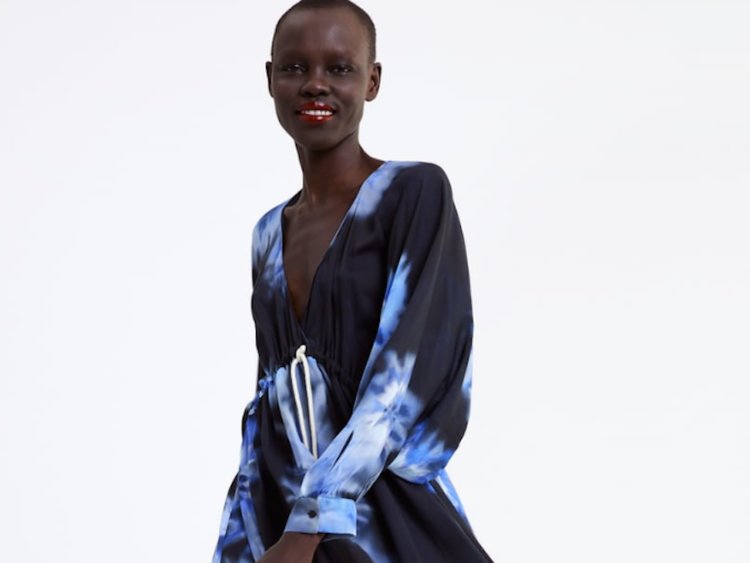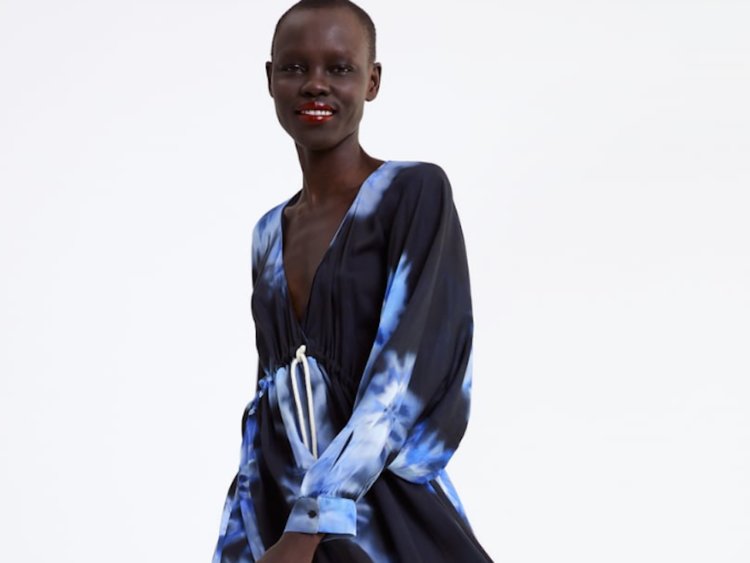 Zara is selling this tie-dye dress for $89.90. Zara
Zara is selling this tie-dye dress for $89.90. Zara
In its heyday in the 1960s, tie-dye was seen as a symbol of the counterculture, a way to escape from the strict social norms of the 1950s and express freedom and individuality.
It’s currently making a comeback in fashion, and experts say there are clear political and social parallels to be made with the 1960s.
“In the Trump era when right-wing politics is so loud, I think tie-dye can be viewed as a peaceful, but defiant protest against conservatives,” R13 denim founder Chris Leba recently told Harper’s Bazaar.
He added: “There are a lot of similarities in terms of the backdrop then and now. In the 60s, we had Nixon in the White House with students protesting against the conservative right. Now we have Trump in the White House with women, immigrants and the LGBQ community fighting for their rights.”
It’s not only the politics of the government, however. This trend can also be seen as a reaction to the social politics of the day, specifically the #MeToo movement.
The #MeToo movement has been one of the leading influences in fashion over the past two years. It initially saw designers turn to darker, more somber shades.
This was “a sure-fire design formula that contrasted with the uncertainty consumers were dealing with in real life,” Florence Allday, a beauty and fashion research analyst at Euromonitor, told Business Insider.
Allday said that #MeToo changed the face of fashion and subsequently brought a more daring and free-spirited approach to design. Tie-dye is reflective of this, she said, a sign of “putting the trauma of recent events in the industry behind us.”
While the tie-dye colors of 2019 are certainly more muted than in the past, they are in keeping with a movement to bring more color to fashion.
“The pendulum swings from one extreme to another,” WSGN catwalks director Lizzy Bowring recently told Business Insider. We “can’t keep wearing black to make a message.”
Rebelling against fast fashion
Consumers are increasingly shifting toward more sustainable shopping — buying secondhand or even renting clothing — as they become more conscious about sustainable living and preserving the environment. Because of this, a rebellion against fast fashion is brewing.
Read more: Experts say this is what everyone will be wearing in 2019
“There is an increasing trend amongst influencers and bloggers to stop with the ‘haul’ videos and follow the ‘no-buy’ movement, i.e. stop pandering to the fast fashion cycle and buy second hand or not at all,” Allday said.
Tie-dye fits neatly into this rebellion.
It has “positive connotations of the hippie movement and crucially, pre-fast fashion,” Allday said. “It is a way of recycling/upcycling clothes that can be done by people of all ages.”
It’s somewhat ironic, therefore, that the tie-dye trend has been picked up by fast-fashion retailers. H&M, Zara, Abercrombie, Urban Outfitters are all using the print in their current collections.
Tie-dye clothes being sold by H&M.H&M
Moreover, tie-dye affords more individuality in dressing. The process of tie-dying clothing — tying up portions of the fabric with waxed thread so that they will not absorb the dye — means that no piece is the same. This is something that can be lacking in fashion these days, Kavita Kumari, a specialist print-and-dye technician at London College of Fashion, told Harper’s Bazaar.
“The re-birth of tie-dye has actually provided individuals with the opportunity to reclaim some of their personal identity without looking like clones of one another,” she said.

